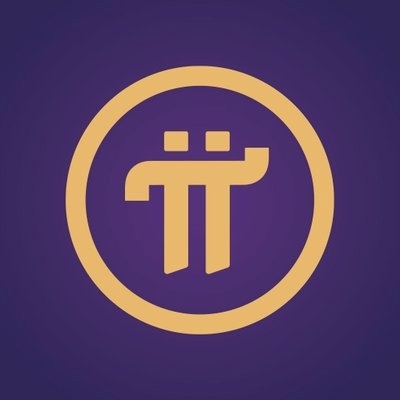States Where Gold and Silver Are Legal Tender

An Intriguing Monetary Shift: States Where Gold and Silver Are Legal Tender
In an era where digital currency dominates the discourse on financial innovation, the decision by some states to recognize gold and silver as legal tender presents a fascinating juxtaposition. This choice beckons a closer examination of the interplay between traditional commodities as currency and the burgeoning financial frontier driven by cryptocurrency and blockchain technologies. Understanding these dynamics offers valuable insights into how diverse forms of money are evolving to meet the needs of a rapidly transforming economic landscape.
The Historical Context of Legal Tender
Legal tender refers to money that must be accepted if offered in payment of a debt. Traditionally, nations mint coins or print paper money and designate these as legal tender within their jurisdictions. However, the concept of gold and silver as money has deep historical roots. If we journey back a few centuries, we discover that precious metals were the cornerstone of trade and commerce. They offered intrinsic value, portability, and acceptance across cultures and continents.
In the United States, states like Utah have reignited this age-old tradition by recognizing gold and silver minted by the federal government as legal forms of payment. This choice simultaneously challenges and complements digital innovations in currency, positioning precious metals in a potentially symbiotic relationship with cryptocurrencies.
States Embracing Gold and Silver
Several U.S. states have taken legislative action to promote the use of gold and silver as currency. Notably, Utah was the pioneer in this movement in 2011, followed by states like Wyoming, Texas, and Missouri. Each of these states has enacted laws that position gold and silver coins minted by the U.S. Mint as legal tender for the settlement of debts and taxes.
The motivations behind these legislative actions are multifaceted. Advocates argue that gold and silver provide a hedge against inflation due to their intrinsic value. They also appeal to a growing population seeking alternatives to fiat currency vulnerability in the face of economic instability.
Implications for the Cryptocurrency and Blockchain Industries
The recognition of gold and silver as legal tender in some U.S. states carries significant implications for the broader financial ecosystem, particularly in the realms of cryptocurrency and blockchain. It’s essential to understand how these developments affect and complement digital financial innovations.
Trust and Intrinsic Value
One of the core attributes of cryptocurrencies like Bitcoin is their intrinsic, decentralized value and the trustless nature of blockchain. Similarly, gold and silver are valued for their tangible worth and permanence. This alignment in intrinsic value creates a psychological synergy, fostering increased trust in alternative currencies.
Diversification of Assets
Investors often advocate for the diversification of assets to mitigate risk. By legally recognizing gold and silver alongside modern digital currencies, individuals and institutions can enjoy increased flexibility and security. This diversification allows for the balancing of assets across physical and digital realms, providing a more robust hedge against market volatility.
Regulatory Synergies
As states advocate for alternative currencies, the regulatory environment also evolves. The incorporation of physical metals as legal tender might spur more favorable legal frameworks for cryptocurrencies. This synergy could accelerate the broader acceptance of blockchain technology and digital assets.
Opportunities in the Financial Ecosystem
Recognizing gold and silver as legal tender offers a paradigm shift in the financial world, uniting ancient and modern forms of money within an evolving economic ecosystem. Stakeholders across industries have numerous opportunities to leverage this change.
Innovative Financial Products
The fusion of traditional metals with blockchain technology could give birth to innovative financial products. Tokenized assets, representing gold and silver on a blockchain, offer increased liquidity, transparency, and transaction efficiency.
Emerging Markets and Adoption
In regions where economic instability is prevalent, traditional and digital alternative currencies can offer security and opportunities for market expansion. The states backing gold and silver provide a model for areas seeking economic stabilization via currency diversification.
Decentralized Financial Solutions
Decentralized finance (DeFi) platforms are uniquely positioned to capitalize on these developments. Integrating gold and silver into DeFi ecosystems can drive novel applications for smart contracts, fostering secure and efficient transactions.
Embracing a Dual-Currency Future
As the financial world advances, blending the steadfastness of gold and silver with the innovation of cryptocurrency and blockchain presents a compelling narrative. It prompts stakeholders, from investors to policymakers, to re-evaluate the foundations of their financial strategies.
For enthusiasts and skeptics alike, the emergence of gold and silver as legal tender in select U.S. states encourages a reevaluation of currency principles and the complex dance between tradition and technology. Exploring these advances invites us to imagine a diversified financial future where value and trust are redefined through the combined strengths of physical and digital assets. This evolution challenges the status quo, beckoning us all to reconsider our perspectives on what money can and should be.
Latest articles
See moreAbout author
I'm Cipher Trio, an explorer who shuttles between blockchain technology and the multilingual world. I'm proficient in Chinese, English, and Japanese, and I'm good at breaking down complex Web3 concepts. From the principles of smart contracts to the NFT art ecosystem, from DeFi innovations to cross-chain technology trends, I'll bring you in-depth interpretations from a global perspective in three languages. I once delved into the application of cryptography at a blockchain laboratory in Tokyo, and later joined a DAO organization in Silicon Valley to promote decentralized collaboration. Now, I'm building a bridge between technology and the public with multilingual content. Follow me and let's unlock the infinite possibilities of blockchain together!






















